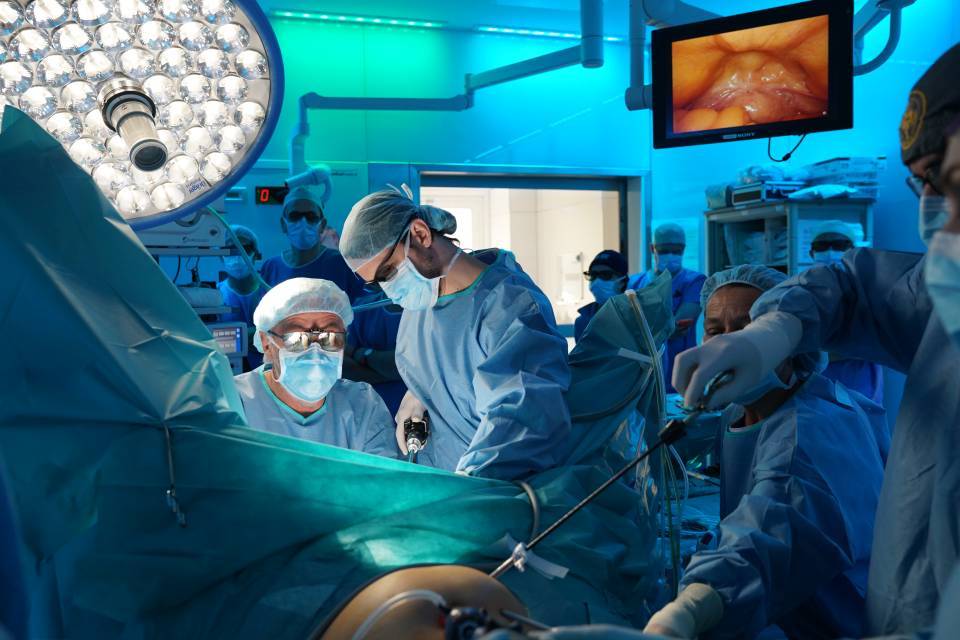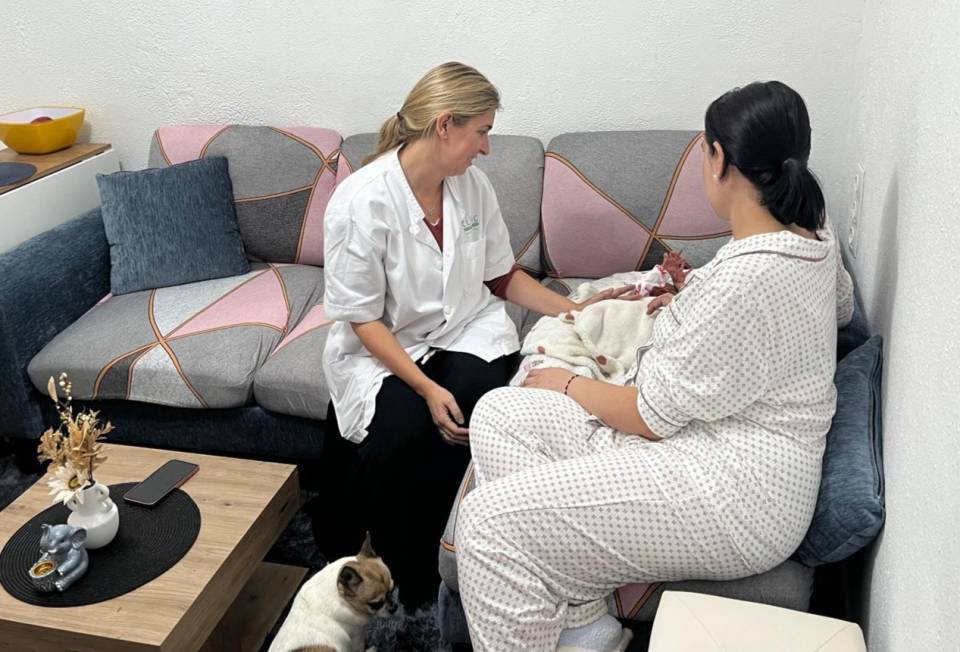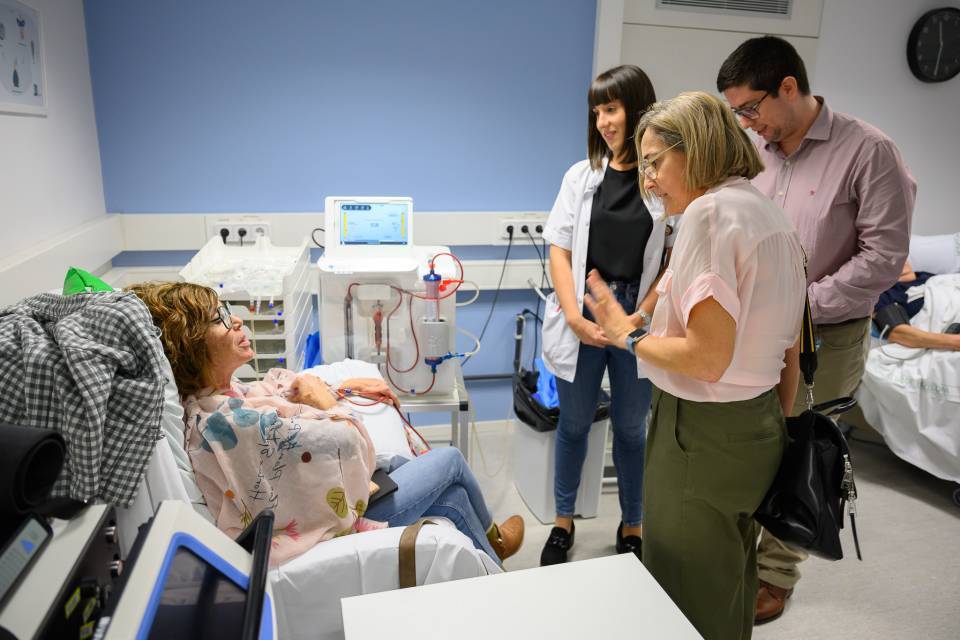TaTME is a complex, innovative technique, which is minimally invasive. It is a hybrid technique combining laparoscopic abdominal resection with transanal excision, increasing the precision of the surgical process. This surgical technique was carried out for the first time ever by Dr. de Lacy in 2009.
Another advantage of the technique is that it reduces surgery time, the length of the hospital stay and postoperative complications such as infections and dehiscence by 50%.
Another of the main advantages of this technique is that it avoids the patient having to have a colostomy bag and, if one is required after the operation, in over 99% of cases it can be removed after three to six months.
TaTME can be used to treat both benign and malignant diseases. The factors than can make TaTME a preferred approach for rectal cancer are: male gender, tumour located under 12 cm from the anal verge, a narrow and/or deep pelvis, visceral obesity, a BMI of over 30, prostatic hypertrophy, a tumour diameter of over 4 cm, distortion of tissue planes due to neoadjuvant radiotherapy, or a very low tumour location requiring a very precise distal resection margin. The current trend is to use this technique in all cases of rectal pathology.
The diseases for which TaTME is indicated are: rectal cancer, inflammatory bowel disease, rectal stenosis, complex fistulas, faecal incontinence, familial adenomatous polyposis, radiation proctitis, need to remove the rectal stump after a Hartmann’s procedure, Hartmann’s reconstruction, and postoperative complications and recurrences.
Colorectal cancer is a type of tumour that forms in the large intestine. It is the third most frequent type of cancer diagnosed in men after prostate and lung cancer, and the second most common in women after breast cancer. It is a disease that can be prevented and cured, since for many years this tumour is a polyp, which, if it is detected in time, can be removed immediately, thus avoiding the appearance of cancer.
TaTME allows rectal cancer to be removed in a safer way from an oncological point of view, which means a higher probability of survival for patients. Since it is minimally invasive, it reduces surgical trauma for the patient, decreases complications and infections, and reduces the length of the hospital stay. Patients can return to their daily life sooner, with an improvement in the aesthetic quality of the surgical scar too.
According to Dr. Antonio de Lacy, Head of the Gastrointestinal Surgery Service at the Hospital Clínic de Barcelona says, “With this technique, not only do we remove the malignant tumour, we also reduce the chances of metastasis and minimize complications for patients after treatment. In addition, we are carrying out a study to show improved oncological results with the use of this technique,” he concludes.
You can consult the photo album of a surgery with the TaTME technique of Dr. Antonio de Lacy.




